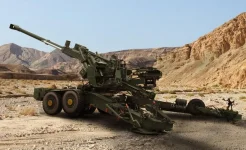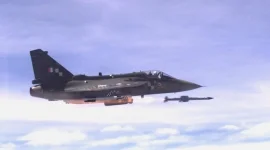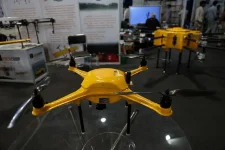A proposed plan for the Indian Army to acquire the American-made Stryker Armoured Vehicle is now in doubt after the vehicle failed to meet a critical operational requirement during recent trials.
India’s Defence Secretary, Rajesh Kumar Singh, has officially verified that the Stryker variant tested in India lacked the amphibious capabilities essential for the Army's needs.
This development shifts the focus towards the indigenously developed Wheeled Armoured Platform (WhAP), as the nation continues its major military modernisation drive.
The Stryker, a family of eight-wheeled armoured vehicles manufactured by General Dynamics Land Systems, was evaluated in India earlier this year. These trials were part of a potential co-production deal under the India-US Defence Technology and Trade Initiative (DTTI).
The vehicle, which has been extensively used by US forces in conflicts such as those in Iraq and Afghanistan, was tested across diverse Indian terrains, from deserts to high-altitude regions, to assess its performance.
However, the trials revealed a significant shortcoming. The Indian Army specifically requires a new armoured vehicle to be amphibious, meaning it must be capable of traversing rivers and water bodies on its own.
Amphibious feature is considered vital for operations in India’s riverine border regions and waterlogged territories, particularly along the Line of Actual Control (LAC) with China and in the northeast.
Defence Secretary Singh confirmed the tested Stryker did not have this capability, making it unsuitable for the Army’s current requirements.
"The Indian Army is looking for an amphibious version of the system," Singh stated, adding that the United States has offered to demonstrate a different, amphibious-capable variant during a future joint military exercise.
The Indian Army’s search for a new vehicle falls under its WhAP program, which aims to replace its ageing fleet of Soviet-era platforms like the BRDM-2 reconnaissance vehicle.
The Army needs a modern, modular 8x8 vehicle that can transport troops safely, be equipped with advanced weaponry like anti-tank missiles, and operate effectively across all terrains.
The ability to cross water is a non-negotiable feature, crucial for navigating challenges in areas like the Pangong Tso in Ladakh and the riverine terrain of the Brahmaputra basin.
While the tested Stryker is a combat-proven platform with advanced electronics and strong armour, its lack of a standard amphibious function was a critical failure point.
In contrast, India has been developing its own solution. The Defence Research and Development Organisation (DRDO), in partnership with Tata Advanced Systems, has produced an indigenous 8x8 amphibious armoured vehicle known as the WhAP, or Kestrel.
This domestic platform is specifically designed to meet the Army's requirement for water mobility and is currently undergoing its own series of advanced trials.
The potential Stryker deal, valued at over $1 billion, included provisions for technology transfer and manufacturing within India, aligning with the government's 'Make in India' policies. Major Indian defence firms like Larsen & Toubro (L&T) and Mahindra Defence Systems were seen as potential partners.
With the focus now likely shifting to the indigenous WhAP, the project stands to become a prominent example of India’s growing self-reliance in the defence manufacturing sector.




